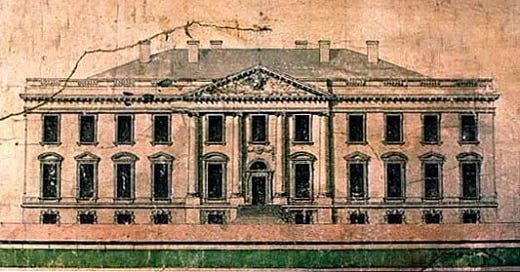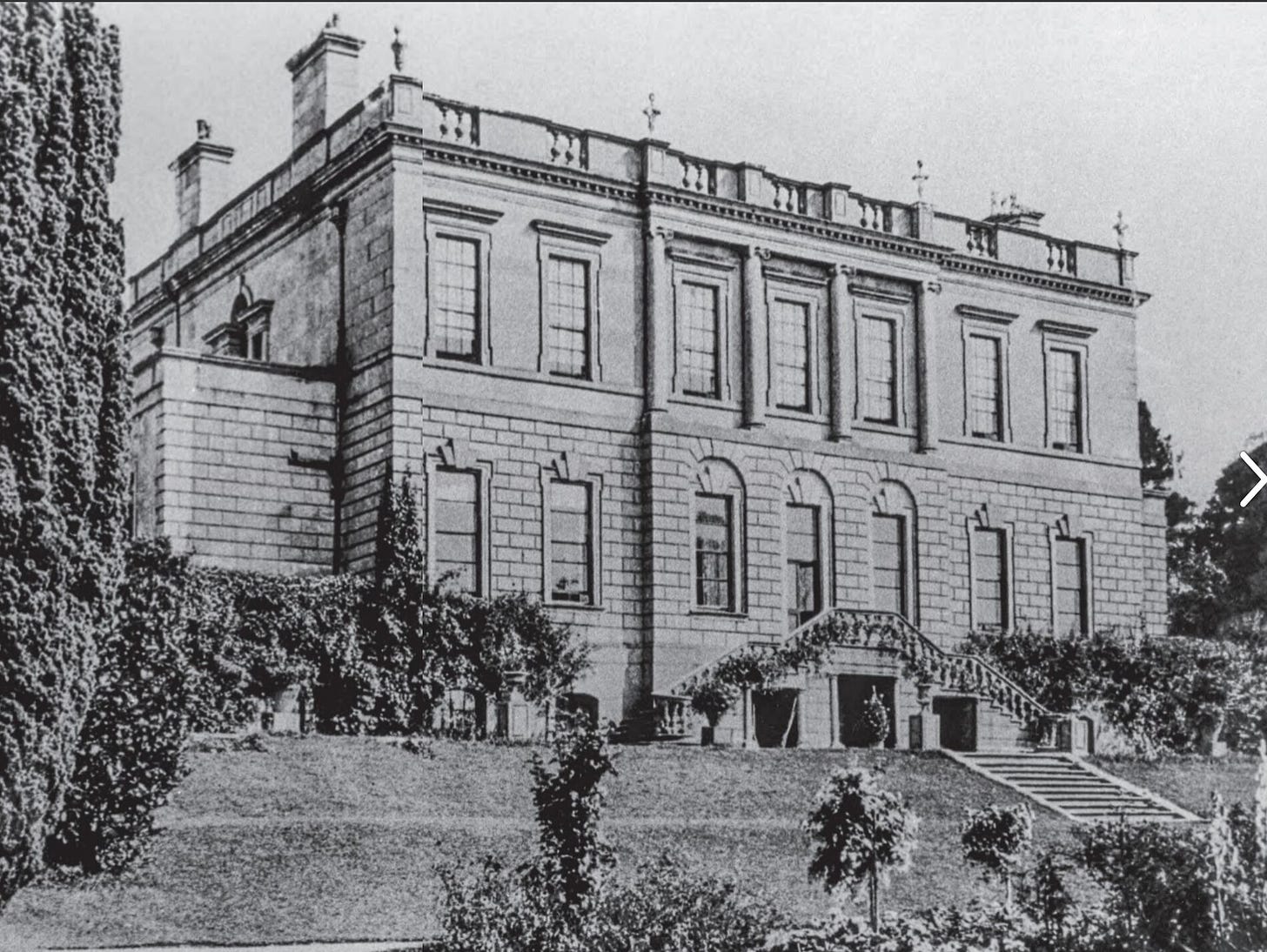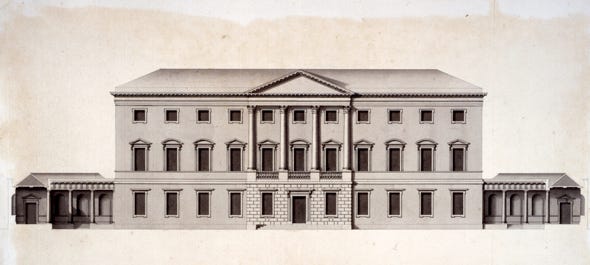When John F. Kennedy visited Ireland in 1963, he addressed the Irish Dáil and spoke extensively of his Irish connections, of Leinster House and its former patrons the Fitzgerald’s, noting; ‘Of all the new relations I have discovered on this trip, I regret to say that no one has yet found any link between me and a great Irish patriot, Lord Edward Fitzgerald’. His speech turns to the enduring link of Ireland and America, separated by distance but connected in spirit and in other ways - the shared heritage of Leinster House and the White House.
The White House was designed by an Irish architect by the name of James Hoban, and Irish born emigrant to America shortly after the American War of Independence. James Hoban was born in 1755 Desart, Cuffesgrange, Co Kilkenny where his father was a tenant farmer and James himself trained as a carpenter. It is believed inspiration for the White House façade could have been implanted as early as Hoban’s childhood growing up around the grounds of Desart.
As a teenager Hoban move to Dublin to join the Dublin Society Drawing School, an institution that allowed free entry to those of insufficient means – little did he know that this would launch him into a career of dizzying heights.
By 1785 at the age of 30, he had emigrated to America, popping up in both Philadelphia and South Carolina advertising his work as an architect. It is in Charleston, South Carolina that he was settle down and build roots in his early years. He became an influential member of the local society, designing and constructing the thousand-seat Charleston Theatre and the Charleston County Courthouse. He also set about building a home – he acquired land, designed, and built a three-story home and in 1790 opened a drawing school of his own.
It is in May of 1791 that Hoban’s career took its greatest leap – after entrenching himself as an important member of Charleston society, his name was circulated when George Washington visited as a part of his tour of America. Hoban was introduced to Washington as ‘a man of merit and of genius’ and he kept him in mind when an architect was needed to design and construct the Presidential House.
Washington had already sourced and arranged an architect to begin work on a presidential house through Pierre Charles L’Enfant, a site was chosen, and initial foundations already laid. His plans were ostentatious, comprising of a structure nearly four times the size of the house eventually built. Washington and the government in general were seeking a much more conservative approach, to serve as a break away from the regal and excessive tastes of the old-world regimes.
L’Enfant was dismissed in early 1792 and a public competition was launched for design proposals for a presidential palace. Hoban's Georgian Dublin influence can be seen in his work throughout Charleston and Washington D.C. - the Charlestown County Courthouse stood out to Washington on his tour and in this can be seen an homage to Leinster House in Dublin. Recalling his appreciation for Hoban’s work, Washington implored him to submit designs for a presidential house and even held private meetings with him to consult ideas and designs. Hoban won the competition and took over the construction of the White House and became overseer of the construction and development within Washington D.C.
Over the years much of Hoban’s work has faced challenges. The White House was burned during the War of 1812 between Britain and America – this required Hoban to oversee its reconstruction. The House itself has seen many modifications over the years - be it extensions, interior renovations etc. The one thing that has been consistently honoured is the exterior façade. One can still see the resemblance of Leinster House in the exterior of the White House recalling an enduring legacy of Georgian architecture which bridges a gap of Irish-American history. As well as this, the Courthouse in Charlestown was burned down in the American Civil War, long after he passed.
Speaking again of James Hoban, John F. Kennedy said:
‘I have no doubt that he believed, by incorporating several features of the Dublin style, he would make it more homelike for any President of Irish descent. It was a long wait, but I appreciate his efforts’.
Hoban’s legacy extends beyond the remit of the White House however – he arrived in the District of Columbia, the newly established capital of America of only two years. He oversaw all public works and oversaw the completion of the Treasury and War Departments, and the U.S. Capitol Building along with a litany of other buildings no longer standing.
James Hoban was also a politician in his lifetime, fighting for the establishment of Catholic institutions, gave a voice to the considerable number of Irish immigrants in Washington and as an abolitionist in the debate around slavery. Though it is important to note that he himself owned slaves early in his time in D.C. The White House Historical Association highlights that the government did not directly own slaves for the construction of the building but did pay slave owners for the labour and James Hoban is listed as owning three slaves who were hired as carpenters.
Unfortunately much of Hoban’s personal and professional papers were lost in a fire in the 1880s leaving only a small fraction of information about him. We do know he lived and worked in Washington until his death on 8th December 1831 at the age of 76. Hoban’s life was and remains a extraordinary example of the path many Irish men and women took in the eighteenth and nineteenth centuries. Facing barriers at home, many sought advancement elsewhere and the United States served as a frequent jumping off point. In the words of J.F.K.: '[Hoban symbolizes] the many and the enduring links which have bound the Irish and the Americans since the earliest days’.
Sources
Stewart D. McLaurin, James Hoban: Designer and Builder of the White House (2021).
‘The story of James Hoban: The Irishman who built the White House’ online at EPIC: The Irish Emigration Museum.
Patrick M. Geoghegan, ‘James Hoban’ online at Dictionary of Irish Biography: https://www.dib.ie/biography/hoban-james-a4034.







